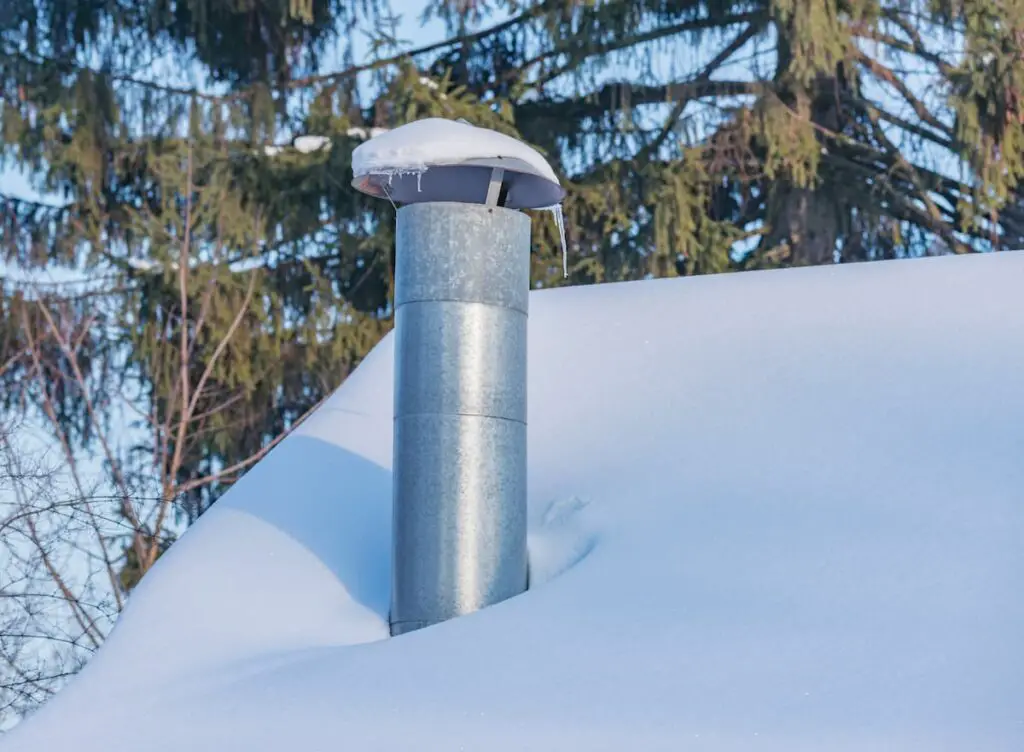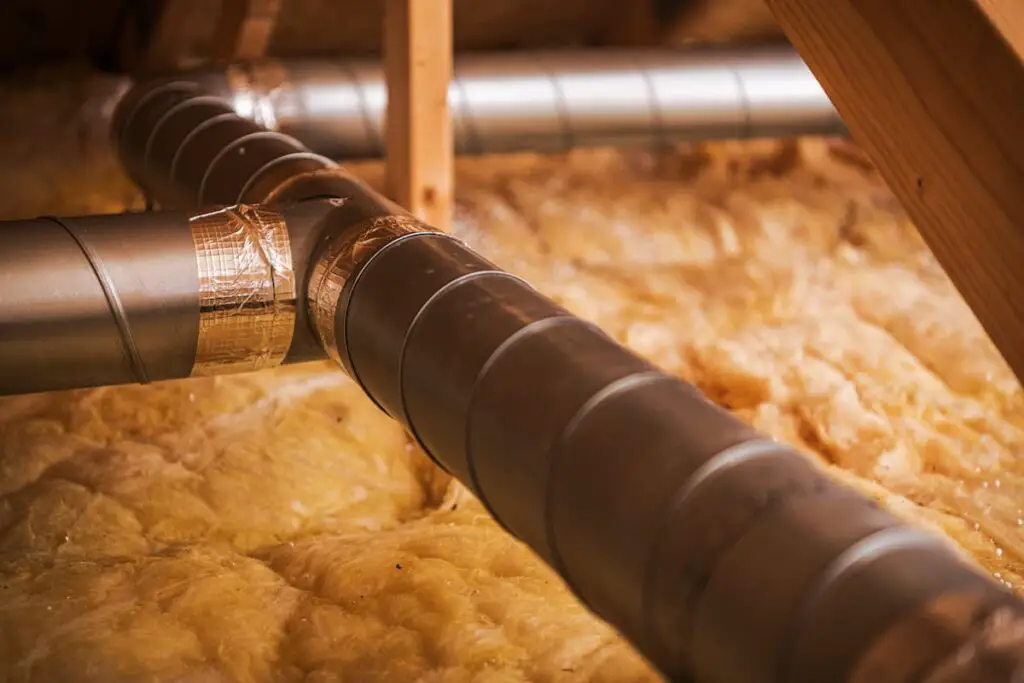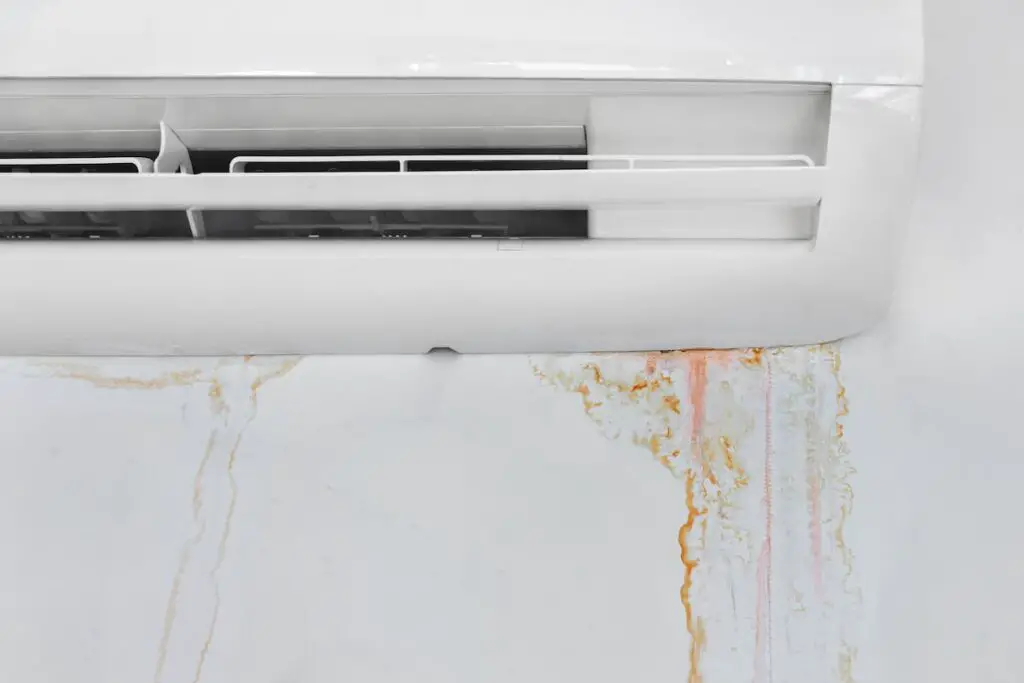As an Amazon Associate, we earn from qualifying purchases. We may also earn commissions if you purchase products from other retailers after clicking on a link from our site.
Although roof vents are necessary for every home, many homeowners don’t know much about them. These ventilation systems ensure that air flows appropriately throughout your attic space, but they can freeze due to the weather. So, are you wondering how to stop roof vents from freezing in winter?
Here’s how to stop your roof vents from freezing in winter:
- Remove snow from your roof regularly.
- Insulate the vent pipes in the attic.
- Install the right type of roof vents.
This article outlines ways to keep your roof vents from freezing in winter. Then we will show you how to recognize when your roof vents are frozen. So, keep reading to learn more.

1. Remove Snow From Your Roof Regularly
If too much snow accumulates on the roof, it can block the vent’s stack and cause freezing. Even though some roofs can bear heavy snowfalls, it is crucial to often remove the snow from your roof.
When should you remove snow from your roof?
- After heavy snowfall: Clear snow from your roof if it exceeds 6” (15.24 cm) to prevent clogged-up roof vents.
- If your roof is flat or low-pitched: Remove snow frequently if your roof is flat or shallow-pitched since it is more prone to accumulations.
- If you hear unusual noises: Cracking, creaking, and popping sounds could mean that your roof is too heavy with snow.
- When you notice ice dams on your roof: Ice dams form when snow or ice melts and then solidify around the edge of your roof. They can cause water leakage in your ceiling, walls, and installation.
2. Insulate the Vent Pipes In the Attic
Attic insulation and proper roof ventilation prevent roof problems. But, if the roof vents in your attic are uninsulated, they will most likely freeze and not function properly. Therefore, there’ll be higher chances of moisture build-up, ice dam formation, wood rot, or mold growth.
Insulating your vent pipes will save energy costs by minimizing air leakage in your attic.
But, it will depend on several factors, including your roof type, your location, and the state of your attic space. So you’ll need to seek a professional contractor’s services if you notice signs that indicate that your vent pipes could be frozen.

Fiberglass is the most preferred insulating material since it reduces thermal energy transfer.
It is also easy to install, and you can do the process yourself. However, you need to take safety precautions such as proper clothing, staying hydrated, and ensuring that the attic is well ventilated.
Here’s a detailed guide on how to install fiberglass. However, if your expertise doesn’t match the task, it’s advisable to have an expert insulate the vent pipes for you.
3. Install the Right Type of Roof Vents
A poor roof ventilation system will not withstand the harsh weather conditions in winter, so it’s crucial to have the right roof vents to facilitate air circulation and prevent roof vent problems. So, an ideal roof vent system will depend on your house’s design, roof type, and ventilation needs.
Roof ventilation systems comprise intake and exhaust vents.
You can also categorize them as active (powered) or passive (static) vent systems. Active ventilation draws air from the outdoors through the intake vents and pressures it out via the exhaust types.
Contrastingly, passive ventilation is low-maintenance as they rely on natural forces such as wind to move the air around the attic.
Types of active roof vents include:
- Turbine vents utilize convection to pass the air around the attic. Although they have straps and are outside the attic, rain, snow, and insects won’t invade your home through these vents.
- Power vents are round located near the peak of the roof. They use electricity to draw in the hot air from the attic. Unfortunately, power vents are prone to failure, and you’ll need to replace them regularly.
- Solar-powered vents rely on the sun for energy. Despite being great for saving energy, they turn off when their batteries are charging. Moreover, they can be less effective during cold seasons.
- Ridge vents with a baffle run from one end of the roof to another. They are popular since you can barely see them from the ground. But, without a filter, they will let in bugs, dirt, snow, and rain.
Passive roof vents include:
- Static vents resemble tiny boxes that allow heat to escape from the roof through convection. So when the temperatures in the attic rise, the hot air leaves through the vents.
- Ridge vents without a baffle are similar to ridge vents with baffles as they cover the entire roof length. The only difference is that they have no baffles. So, they can allow insects and weather elements to reach your attic.
- Gable end vents are wooden vents on the outer wall of your attic beneath the roof eaves. They use wind power to flow the air in and out of your attic.
Signs of Frozen Vents
Roof vents are as essential in winter as they are in the summer. During winter, they allow warm, humid air to escape. However, if the vents are covered by snow, the air will accumulate around the roof surface.
This means that condensation might occur when the warm air comes into contact with the cold roof surface.
The condensed air, now in the form of water droplets, may trickle down to the insulation and ceiling components, causing structural damages. Moreover, the accumulated hot air may melt the snow on the roof’s surface and force it to flow through the gutters. But, it will re-freeze upon reaching cooler surfaces to form ice dams.

You will know that your roof vents are frozen if you notice the following signs:
- High interior temperatures: Roof vents maintain interior temperatures by facilitating air circulation. When the vents are frozen or blocked, the hot air accumulates in the attic since it can’t escape. As a result, the interior temperatures rise, making your home uncomfortable.
- A broken HVAC unit: Since faulty roof vents will increase the interior temperatures, the A/C will over-work. Hence, the HVAC unit will be strained and might break down, escalating the energy costs.
- Dampness in the attic: A roof vent in the winter prevents moisture build-up inside the attic. But, if the vents are clogged up by snow, condensation will occur, and moisture will accumulate. So, you might notice some water leaks from the attic to your ceiling or drywall, causing damage and mold growth.
- Ice dam formation: When the vents become frozen or blocked, ice dams may form on the roof surface due to trapped hot air in your attic. Consequently, the water can seep under the shingles and into the attic, causing significant roof and interior damage.
Key Takeaways
It’s crucial to let your roof vents work during winter to prevent problems arising from poor ventilation.
Roof vents can have several issues, including freezing due to the low temperatures and snow build-up. So it’s essential to detect any signs of frozen vents and fix them immediately to prevent adverse effects.
You can keep the roof vents from freezing during winter by:
- Removing snow from your roof regularly.
- Insulating your attic vent pipes.
- Installing the right types of roof vents.
